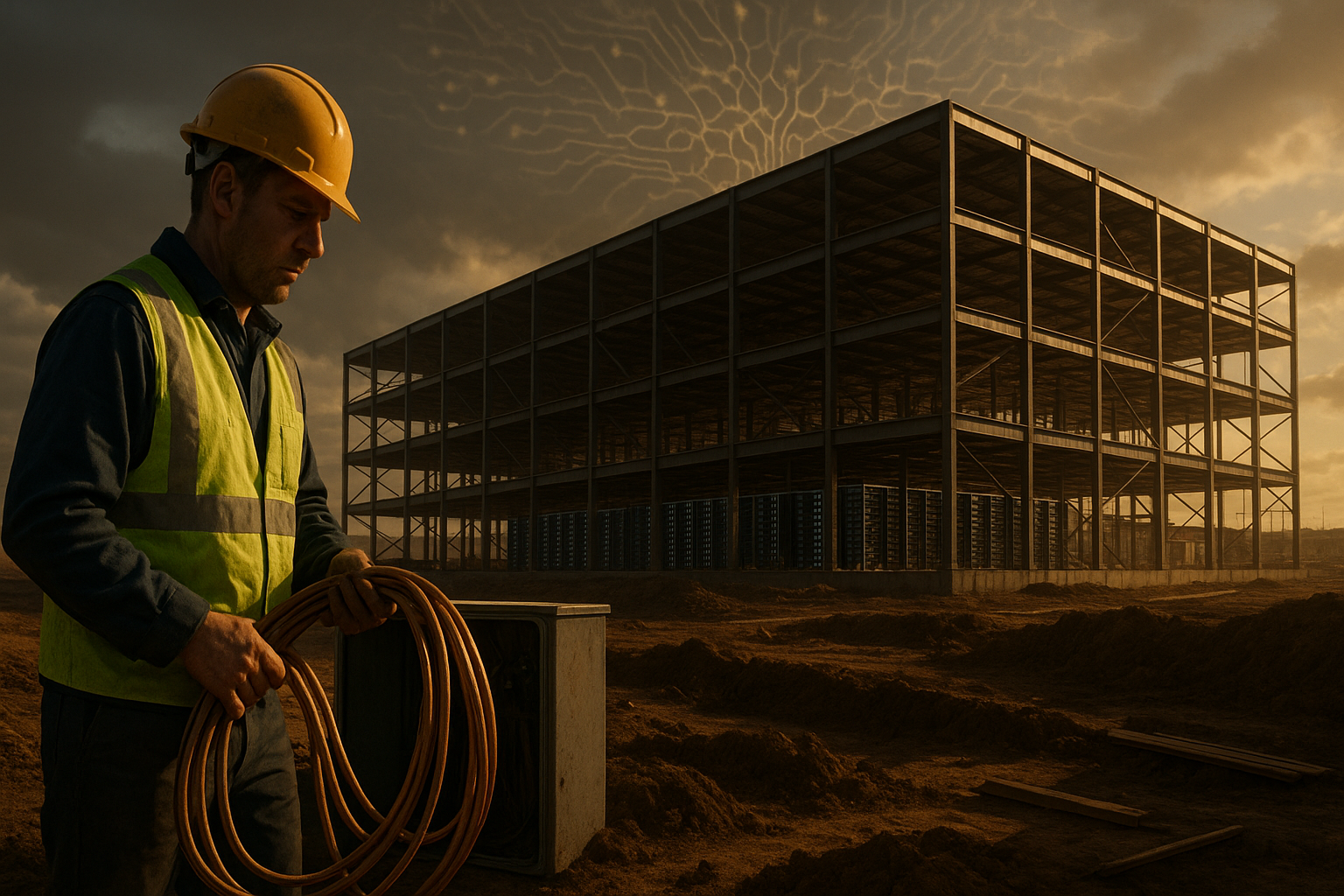The tech world has a blind spot, and it's wearing a hard hat.
While Silicon Valley CEOs wax poetic about artificial intelligence transforming our future, they're suspiciously quiet about a decidedly analog problem: who's going to wire up the massive data centers needed to power this AI revolution?
I've been covering the tech sector for years, and let me tell you, this disconnect between digital ambitions and physical realities is nothing new. But this time, the gap feels different—more consequential.
Look, the AI boom requires an absolutely staggering amount of computing power. Those computing systems, in turn, need literal electrical power—the kind delivered by copper wires installed by human hands. This creates what I've started calling the "Electrician Paradox."
Here's the irony that keeps me up at night: The very industry promising to automate away millions of jobs depends critically on skilled tradespeople who can't be automated away and are already in desperately short supply.
The numbers are sobering. Data centers currently gobble up about 1-2% of global electricity. By 2030? That could skyrocket to 10% if AI deployment continues at projected rates. (And tech companies rarely underestimate their growth projections, do they?)
"We're turning down lucrative projects every week," Mike Hernandez told me when I called his electrical contracting company in Phoenix. "Data centers, especially. We just don't have the manpower."
I heard the same story from contractors in Virginia, Texas, and Oregon—all hotspots in the data center boom. They simply can't find enough qualified electricians to meet demand.
And this isn't a workforce you can scale up overnight. Becoming a licensed electrician typically requires 4-5 years of apprenticeship and thousands of hours of supervised work. You can't learn to safely handle high-voltage systems at a six-week coding bootcamp.
The resulting bottleneck creates fascinating market implications that few investors seem to be discussing.
For one thing, power costs will likely surge for data centers, squeezing margins for cloud providers. That explains why Microsoft, Google, and Amazon have been aggressively locking in long-term energy contracts—they see the writing on the wall.
There's a geographic angle here too. Regions with both abundant electricity and skilled labor pools suddenly have strategic importance in the AI landscape. The Pacific Northwest, with its hydropower resources and strong trade unions? Potentially gold.
Having covered infrastructure issues since the pre-pandemic construction boom, I've watched labor constraints reshape entire industries. This feels similar, but with higher stakes.
Some tech executives get it. During a recent earnings call (that most analysts seemed to sleep through), Microsoft's Satya Nadella briefly mentioned "physical infrastructure constraints" as a potential limiting factor in AI deployment. That's corporate-speak for "we might not be able to build these data centers fast enough."
Will the market eventually solve this? Partially. Higher wages will certainly attract more people to the electrical trades. But (and this is crucial) skilled trades can't scale at software speed. You can't 10x your electrician workforce in 18 months just by throwing money at the problem.
This creates an unexpected investment angle. The companies that understand this constraint earliest—and do something about it—might outperform. Watch for tech firms making unusual investments in trade schools or forming partnerships with electrical contractors. Those moves aren't peripheral—they're strategic.
And here's a thought that keeps nagging at me: What if the limiting factor in artificial intelligence isn't algorithms or chips or data... but the availability of people who know how to install industrial-grade power systems?
There's something deliciously human about that possibility. For all our digital wizardry, we might find ourselves constrained by something as fundamental as finding enough skilled workers to wire up our AI future.
Now, I'm not suggesting the AI revolution won't happen. It will. But its pace might be determined less by breakthroughs in machine learning and more by how quickly we can train a new generation of electricians.
So next time you're evaluating that hot AI stock with the hockey-stick growth projections, maybe ask: Who's going to build the physical infrastructure this company needs? Because sometimes, the most important technology questions have decidedly non-technological answers.
